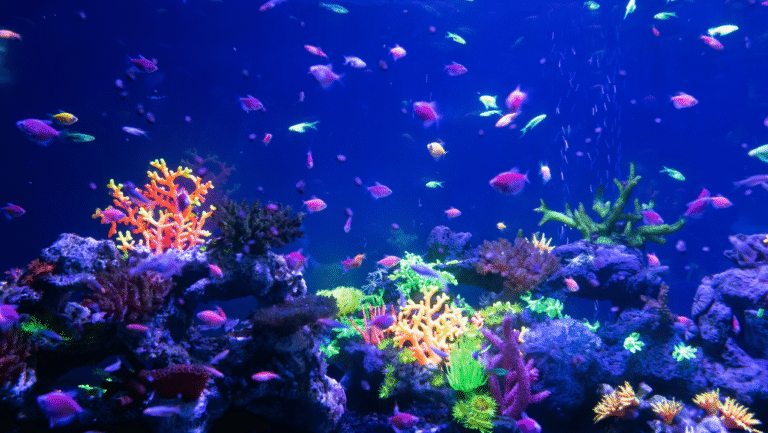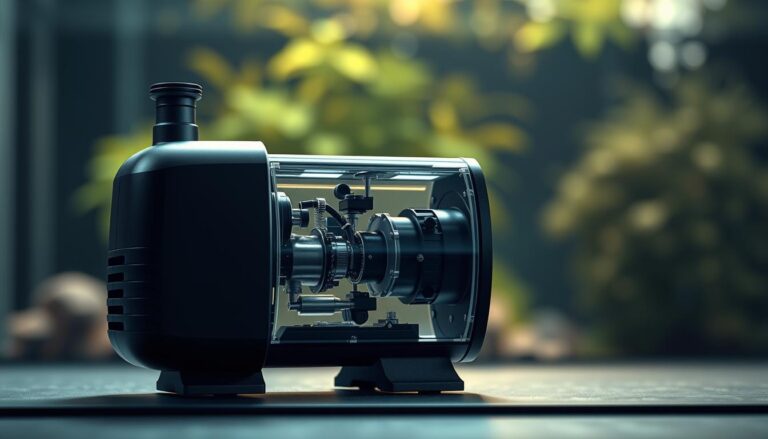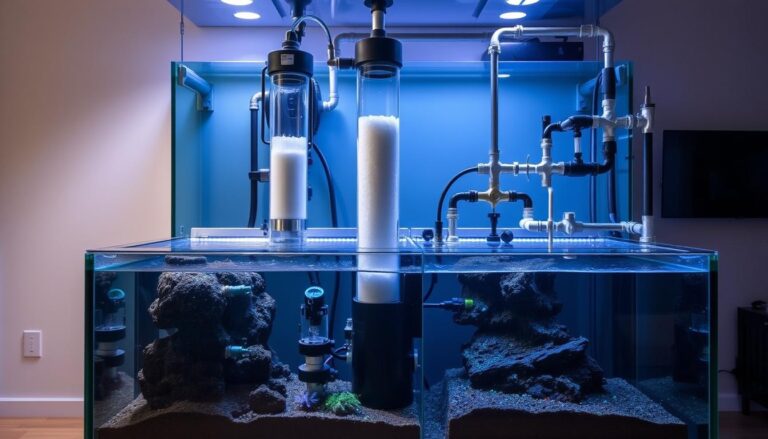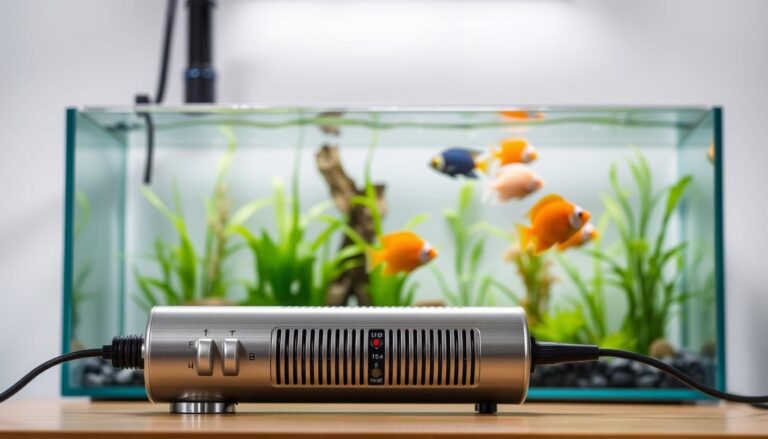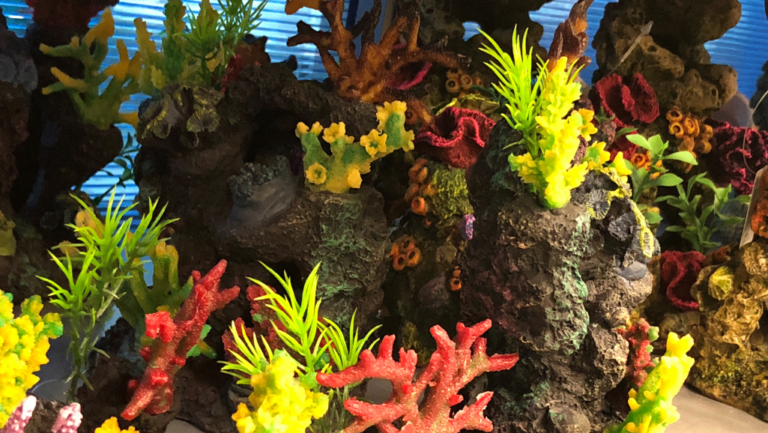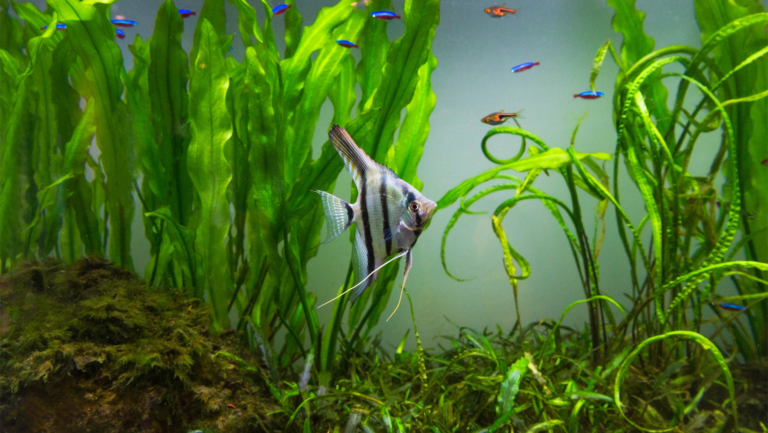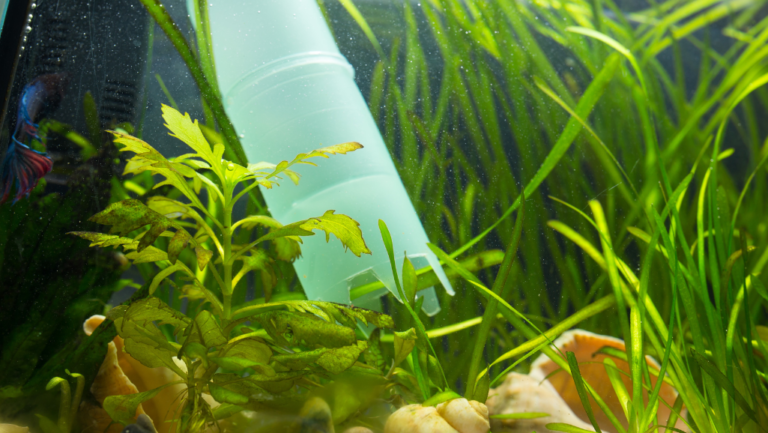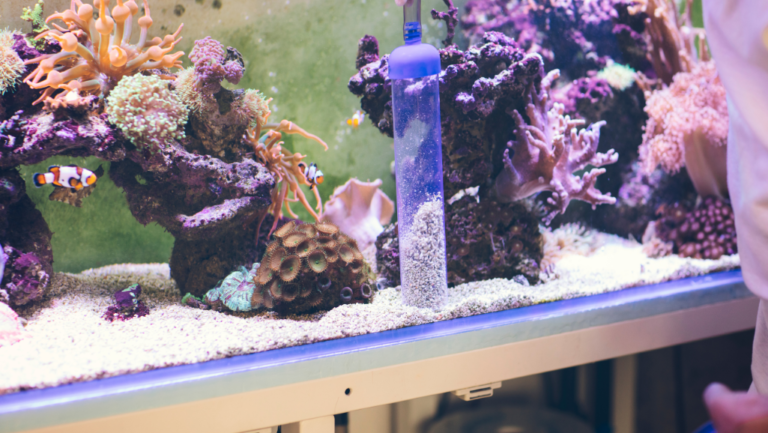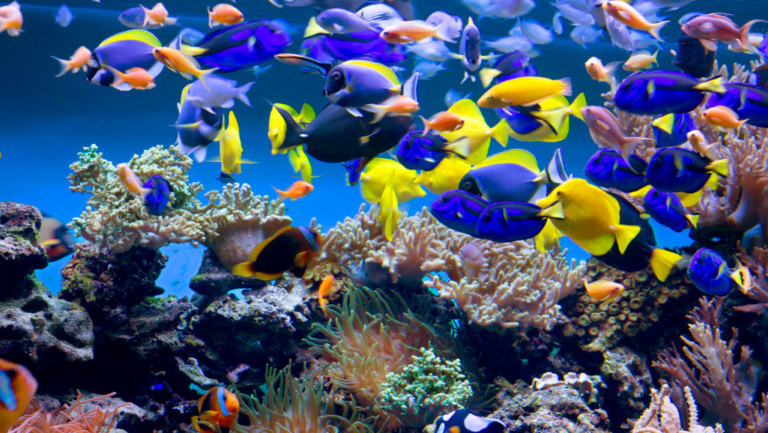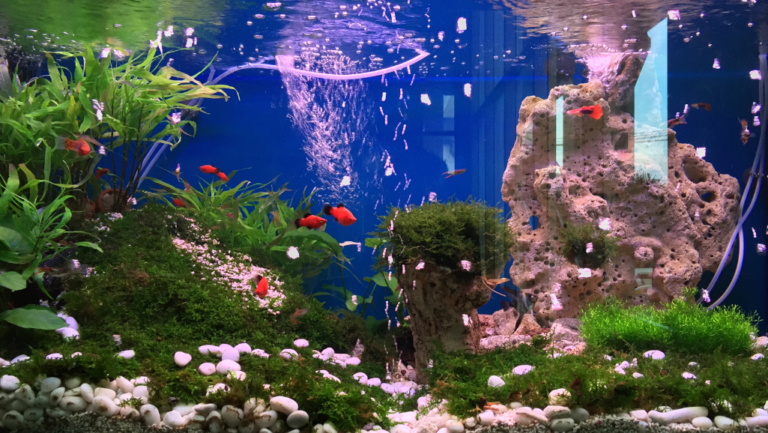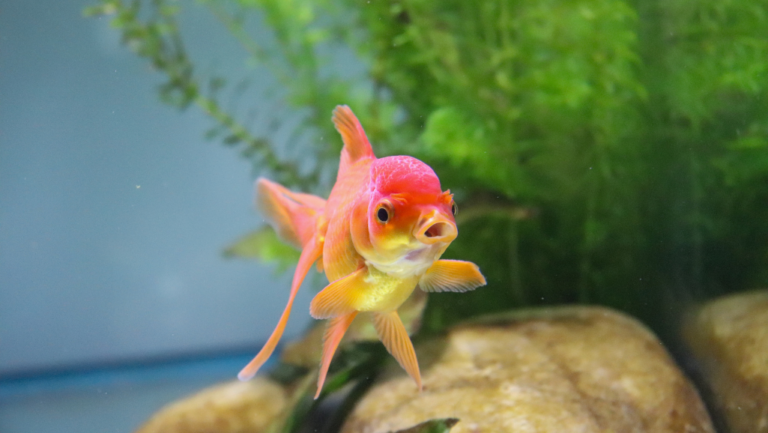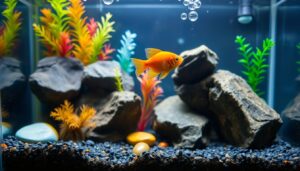Starting a lush underwater garden begins with the right soil. The soil is key for healthy roots and looks. It helps plants grow well and makes your tank beautiful.
Aquarium plant soil is made for plants in water. It’s different from regular gravel or sand. It’s full of nutrients that plants need to grow well. Knowing about good soil is important for a great underwater garden.
There are many aquarium plant soils to choose from. Some, like UNS Controsoil, are very nutrient-rich. Others, like Seachem Fluorite, are made from volcanic ash. They’re good for different types of tanks, from simple to complex.
Starting a dirted planted tank needs thought. You must think about the plants, the look you want, and the tank’s life. Choosing the right soil is the first step to a beautiful underwater garden.
Key Takeaways
- Aquarium plant soil is essential for healthy root growth and nutrient absorption in planted tanks.
- Different types of substrates cater to various aquascaping styles and plant requirements.
- Nutrient-rich soils like UNS Controsoil are excellent for high-tech planted tanks.
- Low-tech setups can benefit from cellulose-rich substrates with low nitrogen content.
- Choosing the right soil involves considering factors such as plant types, desired aesthetic, and compatibility with aquarium inhabitants.
Understanding Aquarium Plant Soil
Starting a thriving underwater garden in your aquarium begins with the right soil. Aquarium plant soil, also known as aquasoil, is made for aquatic plants to grow well. It has minerals, organic matter, and good bacteria that help plants grow.
What is Aquarium Plant Soil?
Aquarium plant soil is a special mix designed for aquatic plants. It’s different from regular gravel or sand because it has lots of nutrients. These nutrients help plants grow strong roots and stay healthy.
Importance of Quality Soil
Choosing good aquarium soil is key for a successful planted tank. Quality soil helps plants grow well by giving them a solid base. Bad soil can make plants weak, lack nutrients, and even die. So, picking a trusted brand of aquasoil is important for a vibrant, healthy aquarium.
“Aquarium soil should be kept at least 1.5 inches thick for optimal root growth and is known to alter water chemistry, lowering pH levels and making water softer, which can benefit some sensitive species like shrimp.”
Types of Soil for Aquatic Plants
There are many soils to choose from for your aquarium. Here are a few common ones:
- Gravel: Good for beginners because it’s cheap and comes in many types. But, it might not be the best for plant growth.
- Sand: Fine and good for fish that live on the bottom. But, it can get too tight and stop roots from growing.
- Specialized Aquarium Soil: Substrates like Seachem Flourite, ADA Aqua Soil, and Eco-Complete are made for plants. They help create a healthy underwater world.
Knowing about the different aquarium soils helps you choose the best one for your tank. Whether you pick a single type or mix them, the right soil is essential for a beautiful underwater garden.
Key Benefits of Using Specialized Soil
Choosing the right substrate is key for a thriving underwater garden. Specialized aquarium soil offers many benefits. It can greatly improve the health and beauty of your planted tank.
Promotes Healthy Root Growth
Specialized aquarium soil is great for healthy root growth. It’s better than gravel or sand because it supports plant roots well. This lets plants grow strong and vibrant.
Supports Nutrient Absorption
Aquarium soil is full of essential minerals and nutrients for plant health. These nutrients are released into the water, making them easy for plants to absorb. This ensures your plants get the nutrients they need to grow well.
“Choosing the best aquarium substrate for plants involves considering porosity, CEC, buffering capacity, aesthetics, and cost.”
Recent stats show that many hobbyists choose nutrient-based and soil-type substrates. About 30% prefer active substrates that release nutrients continuously. This shows how important it is to pick the right substrate for your plants.
Enhances Overall Aesthetic
Specialized aquarium soil also improves your tank’s aesthetic. Its natural look and feel add beauty to your underwater garden. It provides a great base for a wide range of plants, making your tank look lush and diverse.
When picking aquarium soil, think about its porosity, CEC, buffering capacity, and plant compatibility. Researching the pros and cons of different substrates helps you choose the best one for your tank and plants.
Selecting the Right Soil for Your Aquarium
Choosing the right soil is key for your aquarium’s health and plant growth. There are many options, so think about your tank size, plant types, and look you want. This helps you pick the best soil.
Gravel is a favorite for many, as it’s stable and comes in many colors and sizes. Sand is great for fish that live on the bottom, because it looks nice. For lots of plants, use soil that’s full of nutrients.
Factors to Consider
Think about what your aquarium needs when picking soil. Crushed coral and aragonite keep pH levels right for African cichlids and marine life. Soil and clay-based substrates are full of nutrients, helping plants grow well and making the tank look like a riverbed.
The size of your soil matters too. Small-grained gravel works well for tropical tanks. But, big river stones don’t leave enough space for plants. Fine sand is hard for roots to get through, but coarse sand is better for plants.
Popular Soil Brands to Explore
Many brands are known for their good aquarium soils. Seachem Flourite is known for its nutrient-rich soil that helps plants grow. ADA Aqua Soil is great for those who like to create beautiful scenes with plants.
Other brands like CaribSea Eco-Complete and regular gravel are also good. Eco-Complete doesn’t break down, and gravel works well with plants that feed on roots. The best soil for you depends on your tank and plants.
Preparing Your Aquarium for Plant Soil
Starting an underwater garden needs the right tank preparation. Clean the tank well before adding plant soil. This removes debris that can harm plant growth. It also helps keep the ecosystem healthy.
Layering the substrate is important. Start with a base layer of aquarium soil. This layer should be 1″ to 2″ deep. It supports the plants and holds nutrients.
Use at least three types of soil. This includes laterite or clayish soil, loam soil, and a top layer of fine sand. This mix helps the plants grow well.
Layering Techniques
To keep the soil from mixing with water, top it with sand or gravel. The top layer should be about 1″ deep. Make it thinner at the front for looks.
Don’t make the sand layer too thick. It should be no more than 1″ to avoid compacting the soil. This helps the roots grow.
“Constant rearrangement of plants in a dirted tank is discouraged as it can disrupt the substrate and lead to possible problems over time, requiring a full tank reset.”
Adding Fertilizer
Adding aquarium fertilizer helps your plants grow. Root tabs are a good choice. They slowly give nutrients to the roots.
Remember, a well-prepared aquarium with quality plant soil is the start of a beautiful underwater garden. By layering the substrate right and using the right fertilizers, you’ll have a lush and vibrant space. It will bring joy for years.
Planting Techniques for Success
Creating a thriving underwater garden is more than just using good aquarium plant soil. You need the right planting techniques and aquascaping skills. Think about how you arrange, space, and water your plants. This will help you make a lush, vibrant aquascape that aquarium lovers will admire.
Spacing and Arrangement
When planning your aquascaping layout, spacing and arrangement are key. Group plants by growth habits and light needs for a beautiful display. Make sure there’s enough space for plants to grow without crowding, which can harm water flow and nutrient sharing.
Best Practices for Planting
To make your aquatic plants thrive, follow these planting tips:
- Gently remove plants from their containers and rinse the roots to remove any loose soil or debris.
- Carefully place the plants in the aquarium soil, ensuring that the roots are fully covered and the crown (where the roots meet the stems) is not buried too deeply.
- Use aquascaping tools, such as tweezers or tongs, to position plants precisely and minimize disturbance to the soil and surrounding plants.
- Consider using plant weights or anchors to keep plants in place until their roots establish a strong hold in the soil.
“The art of aquascaping lies in the careful selection and arrangement of aquatic plants, creating a living masterpiece that evolves and grows over time.”
Watering Your New Plants
After planting, make sure your plants get enough water flow and light. Gently agitate the water to help nutrients and oxygen reach the plants. Adjust your lighting to match what your plants need, as experts suggest.
By using these planting techniques and aquascaping tips, you’ll create a thriving underwater garden. It will bring joy and beauty to your aquarium for years.
Maintaining Optimal Soil Conditions
To make sure your aquarium plants do well, keeping the soil right is key. This means doing regular checks on the water and soil, and replacing the soil when it runs out of nutrients.
Sean Murphy, a fisheries biologist, has been using a special soil mix for nearly 20 years. He mixes 20% loam, 10% grit, and 70% sphagnum moss peat. His recipe is a hit among hobbyists for growing plants underwater.
Regular Testing and Adjustments
It’s important to test your aquarium water often. Check the pH, hardness, and nutrient levels. Sean suggests adding 5% to 10% clay to the soil mix for better plant growth. Dolomite and muriate of potash add calcium, magnesium, and potassium for plant health.
Lighting is also key for the soil. In a soil tank, use 1 to 2 watts per gallon of light. T8 lighting at 1.5 watts per gallon works well. Use full spectrum bulbs with a color temperature of about 6500 kelvin for the best light for plants.
Replacing Soil When Necessary
Soil can lose nutrients over time, needing to be replaced for plants to keep growing. Watch for signs like yellow leaves or slow growth. Replace the soil to keep your underwater garden healthy.
When you replace the soil, use the mineralized soil method. Rinse and dry the soil three to four times to get it right. Add a layer of the mud mixture, ½” to 1″ deep. Use gravel or sand for borders to make your aquarium look good.
“Using mineralized soil as a substrate helps to speed up the breakdown of organic materials, reducing initial algae outbreaks in aquariums.” – Sean Murphy, Fisheries Biologist
Focus on soil care, water checks, and replacing soil when needed. This will help you create a beautiful underwater world for your plants.
Common Mistakes to Avoid
Setting up a thriving planted aquarium needs careful attention and knowledge of aquatic plants’ needs. Even experienced aquarists can make mistakes that harm their underwater gardens. To make sure your aquarium thrives, avoid these common mistakes.
Overlooking Soil Quality
The quality of the soil is key to your aquarium’s success. Bad soil can cause plants to grow poorly, lack nutrients, and even lead to algae. Choose a high-quality substrate made for aquatic plants. These soils give plants the nutrients and support they need for healthy growth.
Ignoring Plant Requirements
Each plant species has its own needs for light, temperature, and nutrients. Not meeting these needs can make plants struggle or die. Before adding plants, learn about their specific needs. Think about light, water hardness, and nutrients to create a good environment for them.
Neglecting Water Parameters
Keeping water parameters stable is vital for your plants and fish. Check and adjust pH, hardness, and temperature regularly. Bad water conditions can stress, disease, and even kill your plants and fish.
To keep water perfect, experts suggest one to two 30% water changes per week for big tanks with fish. For smaller tanks under 7 gallons, you might need an 80% water change. Also, wait a few weeks before adding fertilizer to control algae.
“The key to a thriving planted aquarium lies in the details. By paying attention to soil quality, plant requirements, and water parameters, you can create a stunning underwater paradise that brings joy for years to come.”
Avoiding these mistakes and following best practices will help you grow a lush aquarium plant community. Remember, patience and hard work are key in aquascaping. If you need help, contact the experts at SevenPorts by calling (626) 333-5372.
Highlighting Top Aquarium Plant Soil Brands
Choosing the right aquarium soil is key for a thriving underwater garden. With many substrate brands out there, picking the best can be tough. Here, we’ll look at three top brands that are favorites in the aquascaping world.
Seachem Flourite is a top pick. It’s a porous clay gravel that’s rich in iron and nutrients. It helps plants grow strong roots and keeps water stable. You can choose from various colors and sizes to match your tank’s look.
ADA Aqua Soil
ADA Aqua Soil is also well-liked. It lowers pH levels and feeds demanding plants well. Made from natural materials, it’s designed to be like the soil in natural waters. There are different types, like Amazonia for lush growth and Malaya for balance.
Eco-Complete
Eco-Complete is a favorite for its natural look and mineral-rich formula. It has over 25 nutrients for plants and doesn’t need rinsing. Its black color makes plants and fish stand out beautifully.
“Choosing the right aquarium plant soil is the foundation of a successful and thriving underwater garden.”
When picking aquarium soil, think about your plants, water, and look. Each brand has its own perks. Do your research to find the best match for your tank. With the right soil, your tank will become a lush, vibrant paradise.
Integrating Soil with Other Aquarium Environments
Choosing the right substrate is key to a healthy and beautiful aquarium. Aquarium soil is great for freshwater tanks but must match other environments and aquascaping styles.
Soil in Freshwater vs. Saltwater Tanks
Aquarium soil is best for freshwater tanks because it supports plant growth. Saltwater tanks need special substrates like live sand or aragonite to keep marine life healthy. Think about what plants and animals you want before picking a substrate.
Experts say using topsoil or potting soil for plants has worked for years. The mineralized soil substrate method can help avoid algae problems. It makes the soil ready for plants faster.
Compatibility with Aquascaping
Soil is perfect for creating stunning underwater scenes. It lets you build slopes, hills, and valleys. Mixing it with rocks and driftwood adds a natural touch to your tank.
When using soil for aquascaping, remember:
- Keep at least 1.5 inches of soil for good root growth.
- Soils like UNS Controsoil are less messy and don’t release ammonia.
- Soil changes water chemistry, making it softer and more acidic, good for many fish and shrimp.
- Using different substrates together can add depth and interest to your tank.
By choosing the right soil and combining it with other tank elements, you can create a vibrant underwater world. It’s a beautiful way to bring nature into your home.
The Future of Aquarium Plant Soil
The world of aquascaping is changing fast, with new soil innovations on the way. These changes promise to make underwater gardens thrive better than ever. Eco-friendly substrates are being made to improve nutrient delivery and keep water clear for longer.
Substrates with high Cation Exchange Capacity (CEC) are getting a lot of attention. Materials like clays and silts can hold onto nutrients like iron and potassium. This helps plants grow strong and healthy.
Innovations in Soil Technology
“Nature Base” is a new substrate that tries to mimic the soil of South America’s igapo and varzea habitats. It’s not just for plants, but helps them grow by mimicking terrestrial soil. Adding botanicals to aquariums also helps, as they break down and provide nutrients for plants.
Sustainable Practices
The future of aquascaping is all about being green. People are looking for ways to make their aquariums eco-friendly without losing the beauty. Substrates like AQUA SOIL-Amazonia II, made from natural black soil, help plants grow well and keep water clear.
Looking ahead, the future of aquarium plant soil is full of promise. With new substrates and green practices, aquascapers can create amazing underwater gardens. These gardens will be beautiful and good for the environment.
Conclusion: Cultivating Your Underwater Paradise
Starting the aquarium hobby is a rewarding journey. The right soil for your aquarium plants is key to a lush, vibrant garden. It will amaze you and bring peace to your home.
The Joy of Aquarium Gardening
Aquarium gardening lets you enjoy nature’s beauty in a special way. Watching your plants grow and seeing them live with your fish is fulfilling. Your tank becomes a living art piece, always changing and growing.
Final Tips for Thriving Aquatic Plants
To keep your plants healthy, keep the water just right. They like temperatures between 72°F and 82°F. Also, change the water 20-30% each week.
Make sure they get enough light, using LED lights for 8-10 hours a day. Use fertilizers or root tabs as needed. With care, your garden will be stunning, making your life happier.
Starting your planted tank journey is exciting. It comes with challenges and rewards. With patience and the right soil, you’ll create a beautiful oasis. Enjoy your aquarium gardening!





